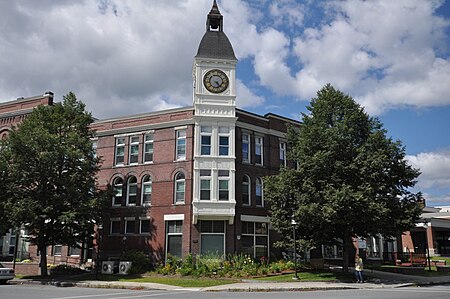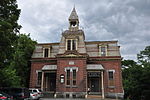Woodsville Opera Building
Buildings and structures in Grafton County, New HampshireEvent venues on the National Register of Historic Places in New HampshireHaverhill, New HampshireNational Register of Historic Places in Grafton County, New HampshireOpera houses in New Hampshire ... and 4 more
Opera houses on the National Register of Historic PlacesRomanesque Revival architecture in New HampshireTheatres completed in 1890Theatres on the National Register of Historic Places in New Hampshire

The Woodsville Opera Building is a historic commercial and performance building at 67 Central Street in Woodsville, New Hampshire, the commercial center of the town of Haverhill. Built in 1890, it is a local architectural landmark, and includes a performance venue that has been used for many local events, including high school graduations and proms. The building was listed on the National Register of Historic Places in 1980.
Excerpt from the Wikipedia article Woodsville Opera Building (License: CC BY-SA 3.0, Authors, Images).Woodsville Opera Building
Pleasant Street,
Geographical coordinates (GPS) Address Nearby Places Show on map
Geographical coordinates (GPS)
| Latitude | Longitude |
|---|---|
| N 44.152222222222 ° | E -72.038333333333 ° |
Address
Pleasant Street 1
03785
New Hampshire, United States
Open on Google Maps







